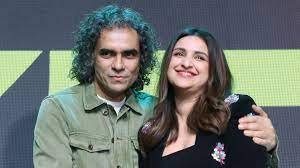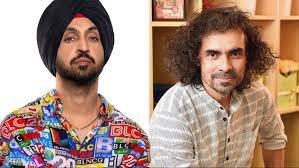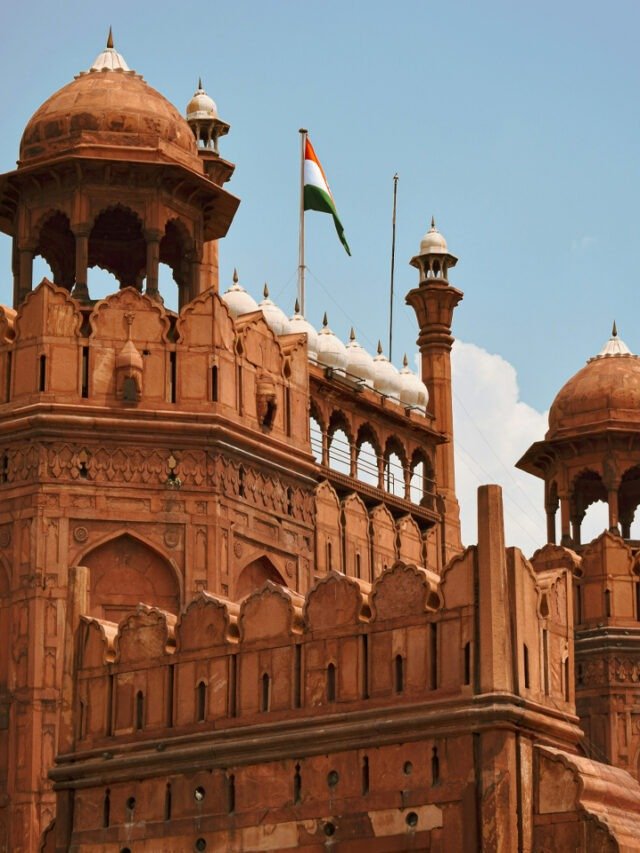NEW DELHI, April 26: He had to “break the grammar” of his own filmmaking, says Imtiaz Ali about his first biopic “Amar Singh Chamkila” in which he introduces a fourth wall to directly speak to viewers, uses animation and splits screens to bring to life the story of the Punjab folk singer killed when he was 27.
The film, which stars Diljit Dosanjh and Parineeti Chopra, rolls out against the backdrop of militancy wracked Punjab in the turbulent 1980s. The massively popular Chamkila, whose music was controversial, risqué and provocative and is still popular, was gunned down in 1988 along with his wife Amarjot.
The film, which has music by A R Rahman and lyrics by Irshad Kamil, is getting rave reviews, quickly climbing to become among the top five films on Netflix global (non English titles). And Ali is full of gratitude.
“I can feel the warmth and love that the audience has shown towards the film and also towards me. I don’t think ive completely taken it all in… All told Pti in an interview.
The story is of course tragic but Ali said Rahman and he decided early on that that would not be the mood because Chamkila’s music was full of life and celebration.
The filmmaker said he had an inkling that he was on the right path when the films first screening was held for MAMI in Mumbai and he saw the theatre turn into an akhada, the street concerts where Chamkila ruled as a singer.
“I feel this vibe has descended upon the film and its also getting the same response as his songs and his akhadas’ used to get.” The filmmaker, known for modern relationship dramas such as “Jab We Met, Love Aaj Kal”, “Rockstar” and “Tamasha said “Chamkila” was his first biopic and afforded him a “certain freshness”
It is inexplicable that so many great artists, Jimi Hendrix, Kurt Cobain, Jim Morrison, Janis Joplin and Amy Winehouse, mysteriously died at the age of 27, Ali said.
The initial research was just speaking to the many people connected to Chamkila and travelling to the interiors of Punjab where the 1980s are still alive, Ali said.
“Since this is a true life story, I decided that as much as possible, I will not manipulate the events that are being told to me… There were some compulsions. I had to break the grammar,” he said.
Ali, for instance, used animation to recapture a roof caving in during a performance where women had gathered to hear Chamkila sing.
“… come to think of it, it must be so painful for those women who must have fallen. We did not want contact to show it in a realistic manner, so we had to go for animation. I never have smoking in my films.
However, it was a very important to show that Chamkila lights up a ‘bidi. I used animation over there too,” he said.
Chamkila’s songs are in Punjabi and Ali said he did not want to compromise on authenticity by dubbing them over, which is why he decided to go for Hindi subtitles for the audience.
“Another compulsion was that there was a personal life story of Chamkila and then there is the larger legend… You have to have a certain style of writing the screenplay so that you see the grandeur and the larger Chamkila story and you see the struggles of a personal individual who’s an artist,” Ali said about his decision to split screens and use sepia tones in certain places.
The idea to break the fourth wall in the songs “Baaja” and “Naram Kalja” came from Rahman.
“He said, Let’s have a musical theatre kind of ah approach to some of the songs.’ I clutched on to
that idea because I knew that the audience coming to watch the film would know zero about Chamkila. So it is the duty of the film to inform them pretty early in the film about who this gentleman is. And that’s what the first song ‘Baaja does.
“And then also the song with the women – ‘Naram Kalja’ — where the women are talking directly to the camera… The real reason of making the film, Ali said, was that Chamkila’s life was like the life of Auth Punjab “which has glory and violence, dovetailing with each other all the time”.
‘There is some irrepressible spirit, but there is also always the blood flowing in the five rivers, and yet there is so much spirit and celebration. But I didn’t want to bore the audience by giving them a lecture on what Punjab is,” he said.
Rahman, Ali said, termed the film Imtiaz 2.0.
“He was the first person I showed the film to because of the background music. He said, ‘This one is different.’ So I said, ‘is it good different or bad different, sir?’ He said, you’ve made eight films. If you’ve made a different film, that in itself is good.” I felt nice about that.
I have a positive feeling about people saying Imtiaz 2.0 and all of that. I feel that a lot of people who were kind of rooting for me got a chance with this film. I also feel a bit more encouraged to
“I have a positive feeling about people saying Imtiaz 2.0 and all of that. I feel that a lot of people who were kind of rooting for me got a chance with this film. I also feel a bit more encouraged to work more earnestly, to delve deeper and I know that a lot can be done in this medium. I have always had this feeling that i’m just scraping the surface of what is possible and can be done as a director.” Ali said his team, including art director Trupti Chavan, cinematographer Sylvester Fonseca and editor Aarti Bajaj, outdid the brief.
Chamkila’s family and the people of Punjab kept reaching out to Ali with personal memorabilia and photographs. Ali said he decided to put some of the videos and photographs during the film by splitting the screen to show the actors and Chamkila and Amarjot performing.
Youre constantly being reminded that these things have happened. You’re constantly cutting back to the bodies to tell them, Okay, we might be in a very happy zone in our film right now where the boy has met the girl, but they are actually dead right now. It added a certain lifelike layer,” said Ali.
The director, who co-wrote the movie with brother Sajid Ali, said the idea was to make a crossover film by not aping American movies but by going “desi”. In his view, the soul of the film, about a young singer paying the price for singing bold lyrics, is universal.
“We actually went local in order to make it very universal and people could understand. It’s quite a ‘theth Punjab”‘ setting, but that makes it a very universal film.” “Amar Singh Chamkila”, produced by Mohit Choudhary, is currently streaming on Netflix.












